#shawlands glasgow
Explore tagged Tumblr posts
Text

jan 2018
#mine#reality#bus stop#shawlands#glasgow#glasgow southside#strathbungo#2018#late 2010s#darkcore#scottish#Scottish winter#urban#urbancore#dark paradise#dark aesthetic#weird aesthetic#weirdcore#dreamcore#creepy
9 notes
·
View notes
Text






1 bedroom flat for sale on Afton Street, Shawlands, Glasgow
Asking price: £145,000
Sold price: £178,000
#2/3 19 Afton St#Shawlands#Glasgow G41 3BT#glasgow#southside#1 bedroom#49 sq meter#epc C#council tax B#sold#sold price
6 notes
·
View notes
Text

walking around shawlands, glasgow southside
6 notes
·
View notes
Photo

Glasgow, Shawlands Arcade. November 2022 #glasgow #glasgowphotography #glasgowphotographer #shawlands #arcade #shawlandsarcade #scotland #scotlandphotography #scotland_greatshots #scotland_insta #photo #mono #monochrome #bnw #bnwphotography #blackandwhitephotography #scottishphotography #scottishphotographer (at Glasgow, United Kingdom) https://www.instagram.com/p/Cls4Vzys_El/?igshid=NGJjMDIxMWI=
#glasgow#glasgowphotography#glasgowphotographer#shawlands#arcade#shawlandsarcade#scotland#scotlandphotography#scotland_greatshots#scotland_insta#photo#mono#monochrome#bnw#bnwphotography#blackandwhitephotography#scottishphotography#scottishphotographer
0 notes
Text
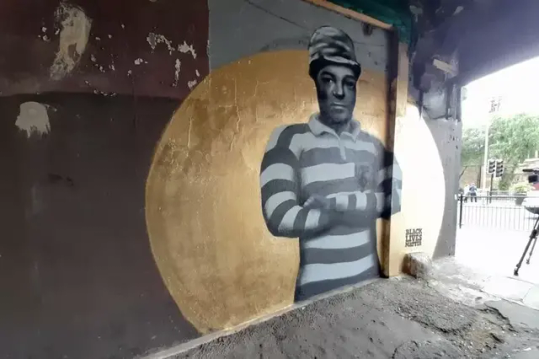
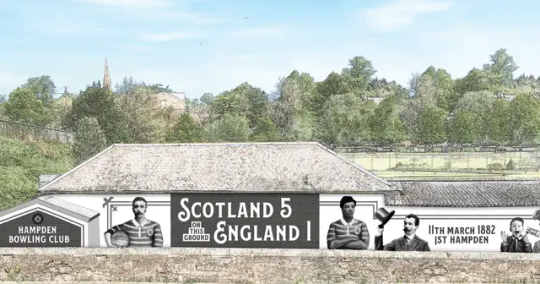
On March 12th 1881 Andrew Watson made his Scotland debut as the world’s first black international football player and captain.
It’s not often I venture into the world of football but this is quite a historical event, not only was he the first Black footballer to captain Scotland, but the first one in International football, although there were very few international teams at this time it is still a major event in my humble opinion, this would actually make him the first Black footballer to play international football, the firsts will continue as the post does…..
Andrew Watson was born in May 24th 1857, Demerara, British Guiana, the son of a wealthy Scottish sugar planter Peter Miller and a local girl Rose Watson. At the age of 14, he was schooled at the exclusive King’s College London, where school records show he excelled at sports including football. He later studied philosophy, mathematics and engineering at University of Glasgow when he was 19, where his natural love of football blossomed.
After first playing for Maxwell F.C., in 1876 he signed for local side Parkgrove F.C. where he was additionally their match secretary, making Watson football’s first black administrator. After marrying in Glasgow, he soon signed for Queen’s Park F.C. – then Britain’s biggest football team – and later became their secretary. He led the team to several Scottish Cup wins, thus becoming the first black player to win a major competition.
Soon Watson won three international caps for Scotland including captaining them to a 6-1 victory against England on March 12, 1881
In 1882, he moved south and became the first black player to play in the English FA Cup when he turned out for London Swifts F.C. In 1884 he was the first foreign player to be invited to join the most exclusive of football teams, a team that only allowed only 50 members of the high elite to join – Corinthians F.C. – created to challenge the supremacy of Queen’s Park and the Scottish national side.
It had been maintained that the first black footballer was Arthur Wharton, until it was only recently noted that Watson pre-dates him by 11 years.
One reason is that when historians consider black footballers, they tend to concentrate on professionals and not amateurs such as Watson. Another is that there are no known written records or match reports that mention the colour of Watson’s skin. One match report is more interested in that Watson played in unusual brown boots rather than the customary black boots of that time.
The colour of his skin was of no significance to his peers and there is no historical record of racism on the part of the Scottish Football Association. As written in the minutes, before one match where Watson was injured and unable to play, an SFA vice-president said if Watson had been fit he would have happily drugged a fellow Scottish international to give Watson his place.
Scottish Football Association Annual of 1880-81 reads…..
“Watson, Andrew: One of the very best backs we have; since joining Queen’s Park has made rapid strides to the front as a player; has great speed and tackles splendidly; powerful and sure kick; well worthy of a place in any representative team.”
There is almost no record of his later life; however, it is known that Watson later emigrated to Australia, he later retired to London in around 1910 and died of pneumonia at 88 Forest Road, Kew, in 1921. He is buried in Richmond Cemetery.
Pics are a mural on the side of Jodandys café in Shawlands, Glasgow, and another at the 1st Hampden Park.
17 notes
·
View notes
Note
hi mads, random, but are you from glasgow? i'm going there in a few weeks and wondering if you had recommendations for cute places, shops and cafes to visit???
technically no but i practically live there at this point lol. ok so i think you should go out the west end (get the subway to hillhead/kelvinhall/kelvinbridge/maybe even partick) and go to kelvingrove gallery and/or the botanic gardens - there are a lot of cute cafes and restaurants out that way too!! alternatively, get the train from central and hang out in shawlands for a bit, there are some really lovely independent shops, and you could also get off the train at pollokshaws west and go to see the highland cows in pollok country park (there are baby ones!!); there's also the burrell collection, a gallery, within the park too. if you like pizza, paesano is the move (there's one in the west end AND one in the city centre), and definitely sugo for pasta (literally my fav place of all time). for drinks in the city centre, i like stereo and tabac for something chill, king tuts is iconic, and devil of brooklyn is meant to be fab - for coffee, tinderbox (they have a few locations across the city), laboratorio espresso, spitfire, or social bite on sauchiehall street (their proceeds go to helping reduce homelessness, and the cakes are AMAZING). drinks in the west end, i'd go to inn deep or banana moon, or somewhere down ashton lane or oran mor if i was feeling a bit fancier, and i tend to buy coffee in the alchemy experiment whenever i'm out there just for an excuse to go in lol - it's a gallery space/cafe hybrid, where they sell art and other little independently-crafted bits and bobs, and if you're there then walk a few doors down to onawallnearyou for prints as well. if you're going any further east than glasgow cross - which you should, to go to the barras market at the weekend - saint luke's and the winged ox for drinks (nice food, too), and us v them for coffee. OH also if you're looking for something cute to do, definitely go pottery painting at the craft pottery (book via insta), and golf fang is meant to be really fun crazy golf but i have yet to try. and tbh if it's live music you're after then i'd just see what's on in stereo/king tuts/broadcast/nice n sleazys while you're there lol you might end up seeing the next big thing!! yeah there's so much to do. gonna tag jade @theseventyfive to see if she has any recs that i've forgotten lol <3
11 notes
·
View notes
Text
can’t believe we got a scottish episode in the new black mirror season lmao yaaasss💗 also the guy that plays stuart in it (daniel portman) is from glasgow & went to shawlands academy which is my high school omgg crazeeeee :pp
2 notes
·
View notes
Text
The Cost of Living in Glasgow
Thinking of moving to Glasgow, or just curious about how the costs compare to other cities? Scotland’s biggest city has its own unique charm, blending modern urban life with rich history. From housing and food to entertainment and transport, let’s dive into what makes Glasgow an affordable, vibrant, and sometimes surprising place to live.
1. Housing and Rent: Affordable Options in the City and Beyond
Housing in Glasgow is more affordable than in other major UK cities like London and Edinburgh. Whether you’re after a cozy flat in the city center or a house in a quiet suburban area, Glasgow offers a range of options:
City Centre Living: If you want to be close to George Square, the University of Glasgow, or Glasgow Green, renting a one-bedroom apartment will set you back around £700-£900 monthly.
Suburban and Outskirts Options: For more budget-friendly living, look to areas like Shawlands, Partick, or Dennistoun, where rent drops to £500-£700 per month for similar accommodations.
Glasgow is known for its unique and diverse neighborhoods, each with a personality of its own. Shawlands has a relaxed vibe with trendy cafes and parks, while Dennistoun is lively with a strong sense of community. Exploring these neighborhoods can lead to surprising savings!
2. Groceries and Dining Out: Local Produce and Multicultural Eats
Food costs in Glasgow are generally reasonable, and you’ll find plenty of supermarkets and local stores offering fresh Scottish produce. Monthly grocery bills typically range from £150 to £250 per person, depending on preferences and shopping habits. For fresh, budget-friendly options, try:
Farmers’ Markets: Queen’s Park and Partick Farmers’ Markets are great for affordable, high-quality local produce.
International Shops: Glasgow’s multicultural population means you’ll find shops selling ingredients from around the world, from spices to specialty Asian foods.
Dining out in Glasgow is a fun experience with many affordable options. The city is known for its culinary diversity, so you can expect everything from budget-friendly street food to upscale dining:
Budget Eats: A meal at a casual restaurant costs about £10-£15. You’ll find excellent pub grub, fish and chips, and a variety of cuisines at affordable prices.
Mid-Range and Special Nights: Fancy a night out? Expect to spend around £40-£60 for two at a mid-range restaurant. West End’s Byres Road and Finnieston are bustling areas with fantastic dining spots.
3. Transportation: Getting Around the City
Public transportation in Glasgow is well-connected and affordable. With buses, trains, and the Subway (nicknamed the “Clockwork Orange” due to its color and circular route), you’ll have no problem getting around.
Subway and Bus Passes: A single Subway ticket costs £1.75, while an all-day ticket is £4.20. Buses cost around £2.50 for a single trip. For regular commuters, a monthly travel pass is about £55-£60, which covers buses and the Subway.
Cycling and Walking: Glasgow’s pedestrian-friendly and bike paths are expanding. Plus, cycling along the River Clyde or walking through Kelvingrove Park is scenic and free!
For those with cars, parking in the city center can be pricey, with daily rates averaging £10-£20. Petrol prices align with national averages, though public transport is often a more cost-effective and hassle-free option.
4. Utilities and Internet: Staying Warm and Connected
Glasgow’s weather is famously unpredictable, but thankfully, utility costs are manageable. On average, expect to pay:
Electricity and Gas: Between £70 and £120 per month, depending on the season and apartment size.
Internet: A standard broadband connection costs around £20-£35 per month.
Given Glasgow’s rainy reputation, you’ll likely rely on heating in winter, but costs are still generally affordable. To cut down on bills, consider insulating your apartment well and using energy-saving bulbs.
5. Entertainment and Social Life: Culture Without Breaking the Bank
Glasgow is a lively city with tons of affordable entertainment options, from museums to pubs and music venues:
Museums and Galleries: Most museums, like the Kelvingrove Art Gallery and Museum, are free to enter, and they’re ideal for weekends or rainy days.
Music and Nightlife: Known for its music scene, Glasgow offers both small, cozy venues and large concert halls. Smaller gigs range from £5-£10, while big-name artists cost upwards of £30.
Cinema and Theatres: Movie tickets are around £10-£12, and you can find discounts on weekdays. Theatres like the King’s Theatre often have affordable tickets for local and touring productions.
Parks are another Glasgow highlight, with over 90 green spaces! Kelvingrove Park, Pollok Country Park, and Glasgow Botanic Gardens are beautiful places to relax, picnic, and enjoy nature—all free of charge.
6. Healthcare and Education: Affordable and High-Quality Services
Scotland’s healthcare system, the NHS, ensures that GP visits and most health services are free for residents. Glasgow also has several respected universities, including the University of Glasgow and Strathclyde University. While tuition varies for international and UK students, Scottish residents benefit from free undergraduate education, making it an affordable place to study.
7. A Glasgow Budget Snapshot
To give you a clearer picture, here’s a quick monthly cost estimate for a single person:
Rent (One-bedroom, city): 700 - 900
Utilities: 70 - 120
Groceries: 150 - 250
Transport: 55 - 60
Dining Out/Leisure: 100 - 150
Total: 1,075-1,480
Final Thoughts: Is Glasgow a Good Fit for You?
With its affordability, culture, and stunning surroundings, Glasgow offers a high quality of life at a reasonable cost. From free museums to accessible public transport and affordable dining options, the city is wallet-friendly without compromising on excitement. Whether you’re a student, young professional, or retiree, Glasgow has something for everyone, making it a fantastic place to live, study, or explore.
So, is Glasgow calling you? With its friendly atmosphere, rich history, and affordability, it just might be!
0 notes
Text
Student Accommodation Near Lingo Flamingo Glasgow
Lingo Flamingo is a language school in Glasgow. It aims to promote the well-being of society and improve the cognitive health of its students. It wants to enable lifelong learning by providing accessible language-learning services.
Their mission is to be the largest and the most easily accessible provider of interactive language learning in the UK. The teachers here provide their students with the best learning experience and know how to work with adults as well. They regularly work with local communities, care providers, and research institutions.
If you are moving to Glasgow to study at Lingo Flamingo, you will need a place to stay. Your student accommodation near Lingo Flamingo should have some basic amenities and fulfill your preferences. More importantly, it should have flexible lease terms. Let's discuss this in more detail down the line, first, let's discuss why Lingo Flamingo is the best choice for improving language skills.

In 2022, Lingo Flamingo became an approved center for SQA. This allows the institute to award National Level 2 qualifications to their older learners when they complete their Lingo course. This is the first institution of its kind as it offers formal qualifications to older adults dealing with dementia.
The oldest student at Lingo Flamingo to achieve their SQA qualification is 99 years old! This proves that it is never too late to start learning. This empowers the students by reminding them of their capabilities and achievements.
10 Reasons to Join Lingo Flamingo
The school teaches six languages at various levels of proficiency. The classes are held in person as well as online. Offline classes are held at Shawlands hub. It provides support and online tools that can make learning an interactive experience for all students.
1. Immersive Teaching:
It is the school’s purpose to make very engaging, highly immersive, and multisensory classes for seniors and those who live with dementia. This has led it to develop unique teaching methodologies that encourage brain development and create a fun accessible relaxed atmosphere for all age groups.
2. Accessible:
Regardless of your age, physical condition, mental well-being, financial status, or geographical location, you can benefit from learning languages. It places great emphasis on accessibility at the heart of everything it does; from teaching techniques to the materials the school generates.
3. Affordable:
Language learning must be cheap in order to be accessible. Therefore, Lingo Flamingo maintains the lowest possible prices for all its classes and includes everything like materials, textbooks, etc. in the overall price.
4. Relaxed Atmosphere:
Language learning in the UK is often associated with rather dull rigidity aimless purpose or agonizing awkwardness for many reasons. The school wants to put these misconceptions to sleep once and for all. To this end, it does things like offer you tea or coffee when you arrive, and give you an easy-going comfortable environment in which you learn and build valuable connections.
5. Not-for-Profit:
It is a charity that was established to enhance and exploit the use of languages as a way of improving health. As such, every penny of profit from its Language Nest courses is plowed back into free or subsidized language projects specifically designed for care homes and older adult community groups anywhere in Scotland.
6. Good for the Brain:
If you are not having fun or enjoying yourself, you may learn little. The classes consist of teaching through the senses and playing enjoyable games with new activities using unique materials. With these elements added and their experienced tutors, the classes are interactive, where time flies and your lessons will stay with you forever.
7. Small Classes:
Smaller groups mean more time can be devoted to helping eliminate any learning barriers that you might have at an individual level. It also means that this setting gives you a higher chance of bonding with your colleagues thereby making learning even better. This is why Lingo Flamingo created a living-room-like classroom environment, which only accommodates twelve students who can just sit back and start studying!
8. Research-Based:
Its academic base is very solid and has worked with several well-known research partners to strengthen the argument for language learning as a health benefit. This is firstly, to support non-pharmaceutical therapies in treating dementia patients. Moreover, this also shows that there are more benefits to studying language than just those all of us know.
9. Unique Materials:
A series of textbooks has been created for elderly people and those diagnosed with dementia. These texts are unprecedented and therefore include selected colors, large text sizes, readable fonts as well and captivating content that caters to various levels of ability and requirement. It also uses many different props and games besides the textbook-based classroom activities that probably don’t take place in your regular classes.
10. Confidence-Building:
It is not easy to learn languages. However, the school will help you get through these classes which provide a worthwhile experience where you will see marked development in your skill level every time you attend one. Its programs make students more self-assured, thereby improving their overall sense of well-being.
Properties Offered by Uninist in Glasgow
Boyce House at 47 Kyle Street is flexible student accommodation provided by Uninist in Glasgow. This accommodation includes comfortable beds, a study area, a gym, a cinema room, a games room, and a laundry room.
Uninist knows that students enroll in courses of different lengths. Plans and schedules can change while studying in Glasgow, affecting how long you need to stay. That’s why having flexible lease terms is important.
Uninist
Uninist helps you find the perfect place to stay while studying in Glasgow. You can choose Student Residence for stays ranging from 2 weeks to 52 weeks. Uninist understands the need for flexible tenancy options. All their properties are in great locations, close to schools, and easy to reach by public transport.
Uninist offers customized solutions for international students with varying lease terms. You can choose from different lease options, and the best part is you can select short-term student accommodation based on the length of your course.
#flexible student accommodation#international students#short term student accommodation#student accommodation#student housing#student apartments#student rooms#studying abroad
0 notes
Text
Glasgow celebrity cat considered Google Maps 'tourist attraction'
New Post has been published on https://petn.ws/AqO8P
Glasgow celebrity cat considered Google Maps 'tourist attraction'
When we think about tourist attractions around Glasgow the Kelvingrove Art Gallery and the Botanics immediately come to mind. However, Google has declared a certain feline named Freddy in the south side a must see for those planning to visit the city. The orange cat, who is fondly dubbed the mayor of Shawlands by locals, […]
See full article at https://petn.ws/AqO8P #CatsNews #Freddy, #Glasgow, #GoogleMaps, #KelvingroveArtGallery, #TouristAttractions
0 notes
Text
FMP
Contextual Research
Other Arcades - Regeneration
THE ARCADE - DEWSBURY
The Arcade in Dewsbury has been inhabited for many years now, but it is about to get a revamp and made into a new space. I thought this was a really interesting project. It has not been completed yet but looking into their process could really help me
On their about section of their website it reads:
"The listed Arcade, with its beautiful roof and ironwork is close to many Dewsbury hearts. Built in 1899, it was a popular town centre thoroughfare right through to 2014. A combination of falling town centre footfall, poor management and lack of investment by absentee owners, saw the Arcade empty out from 2011 and finally close in 2016
After considering all its options, in May 2020 the Council purchased the Arcade and as one of the lead projects in the ‘Dewsbury Blueprint’ is investing money in a full refurbishment.
The Arcade consists of 15 small shops, bookended by 4 larger units at the Market Place and Commercial Street ends of around 500 sq ft per floor. The shops are around 200 sq ft. There is a second floor running above the shops that will offer 9 studios that may be suitable for artists
The design team for the Arcade and Markets, BDP Architects, were appointed by the Council in January ’21 and the intention is that the Arcade opens in 2024.
The Arcade cannot be what it was. It cannot consist of shops relying on passing trade. We have to create reasons for people making a special trip – specialist shops (that probably have an online presence as well), culture, events, creative work etc. We also need to work with the Dewsbury Market team to make the town centre worth visiting again."
Reading this it shows that they understand that the current format that the arcade is in isn't working and it needs to change. I feel like this could be in a similar scenario to Bournemouth where the shops that are thriving are chains. I also like what they said about arcades being used as a walkway as they said the shops within it rely on passing trade. Instead you have to create reasons for people to come in.
SHAWLANDS ARCADE - GLASGOW
The plan for this arcade is to transform it into retail units and 300 new homes. They also want there to be wide pavements to allow for outdoor seating and cafe culture.
0 notes
Text
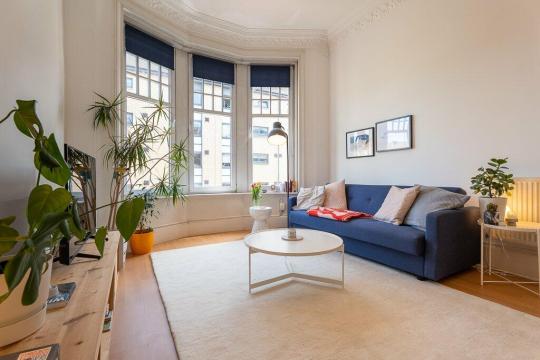

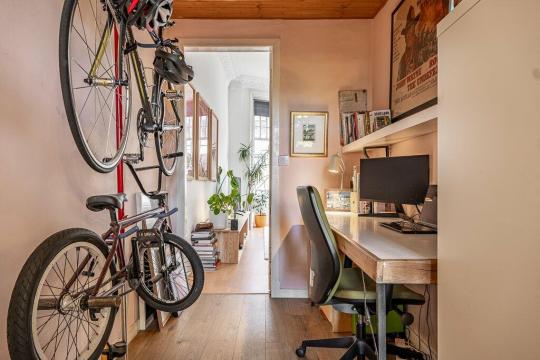





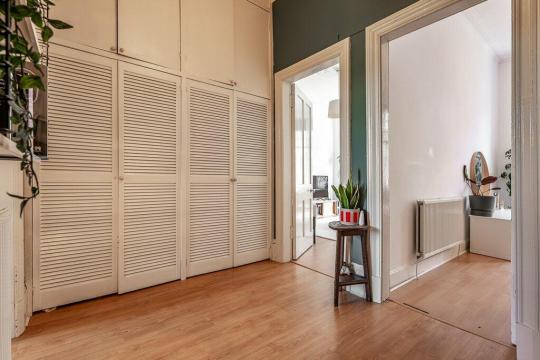
1 bedroom flat for sale on Kilmarnock Road, Shawlands, Glasgow
Asking price: £155,000
Sold price: £200,103
10 notes
·
View notes
Text


jack o'lantern watch around shawlands, glasgow 🎃
1 note
·
View note
Photo

Frozen stream in Shawlands, Glasgow. December 2022 #frozen #stream #river #glasgow #scotland #glasgowphotographer #glasgowphotography #glasgowscotland #scotland_greatshots #scotland_insta #scotlandphotography #scotlandphotographer #bnw #bnwphotography #mono #monochromaticphotography #blackandwhitephotography #blackandwhite #ice #icy #cold #shawlands (at Glasgow, United Kingdom) https://www.instagram.com/p/CmSL_L1OpvZ/?igshid=NGJjMDIxMWI=
#frozen#stream#river#glasgow#scotland#glasgowphotographer#glasgowphotography#glasgowscotland#scotland_greatshots#scotland_insta#scotlandphotography#scotlandphotographer#bnw#bnwphotography#mono#monochromaticphotography#blackandwhitephotography#blackandwhite#ice#icy#cold#shawlands
0 notes
Text
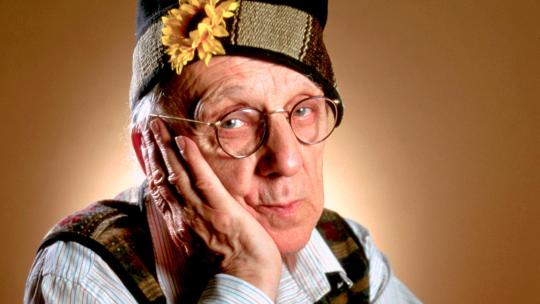
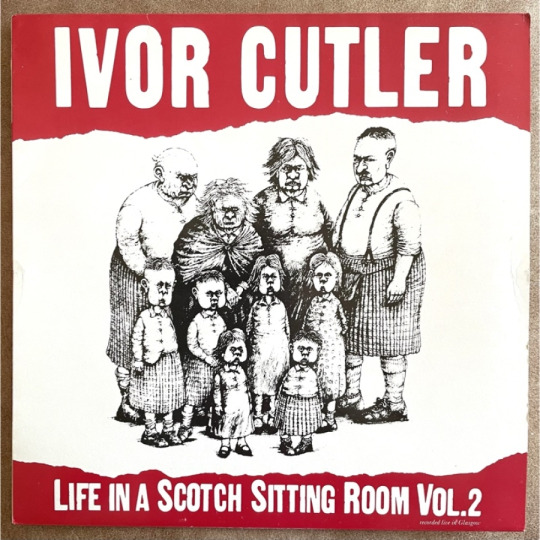

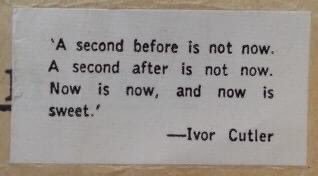

15th January 1923 saw the birth of the wonderfully eccentric and very funny Ivor Cutler.
Born Isadore Cutler in Govan, Glasgow, into a middle-class Jewish family of Eastern European descent. His father Jack Moris Cutler was a wholesale jeweller and had premises at 85 Queen Street. He cited his childhood as the source of his artistic temperament, recalling a sense of displacement when his younger brother was born: "Without that I would not have been so screwed up as I am, and therefore not as creative." And creative he was!
Ivor was educated at the Shawlands Academy.[4] In 1939 Cutler was evacuated to Annan. He joined the Royal Air Force as a navigator in 1942 but was soon grounded for "dreaminess", apparently more interested in looking at the clouds from the cockpit window than locating a flight path, and worked as a storeman. After the war he studied at Glasgow School of Art and became a schoolteacher.
Working at a school in Paisley, however, did not agree with Cutler. He hated discipline that required the strap, having received it more than 200 times himself, and in a dramatic gesture took the instrument from his desk, cut it into pieces and dispensed them to the class.
Leaving Scotland was, he claimed, "the beginning of my life". He settled in London for a time teaching music, dance, drama and poetry to 7- to 11-year-olds. Oh how I would have loved to have been a fly on the wall in on of his classrooms.
His dour recordings bely his existence growing up in Glasgow and seeing his peers arriving at school with bare feet - a fact which, he later claimed, helped form his leftwing political views, aged five - appeared in his hilarious writings, Life in a Scotch Sitting Room Volume 2. With lines such as "Voiding bowels in those days was unheard of. People just kept it in," he used a string of fantastical untruths to expose the reality of his life and the Spartan - and sometimes sadistic - Scottish existence.
He also taught for a time at A S Neil's Summerhill school. Dubbed a hippy academy where a different approach to education was fostered, Summerhill was run with rules agreed between staff and pupils, and the premise was to educate the whole person. This alternative philosophy appealed to Cutler. He lived in the grounds of the school. Ivor married for a time, but his parenting skills did not go down too well with his then wife, they had two sons, he sent one, on his first day at school wearing a kilt, I can see that going down well in England! His son remembers his father once taking him fake fishing,taking him out in the street, with a stick and bit of string and a fork tied on the end dangling in a puddle, being his fishing line, he also says "I couldn't say I was pleased when he felt the need to walk down the street with a carpet sample in place of a tie."
During the late 50's and into the 60's he mixed his teaching with that of entertainment, managing to secure a slot on Acker Bilk Show and Late Night Line-Up. On one such appearance he was spotted by Paul McCartney, who invited Cutler to appear in the Beatles' film Magical Mystery Tour where he played the bus conductor Buster Bloodvessel, and yes the lead singer of Bad Manners took his name from this and was also a fan of Cutler.
Through music, poetry and children’s books the songwriter, poet and “unjoiner” of thoughts perfected a brand of eccentric mischief that made him a favourite of many.
His absurdist songs – sung in dour Glaswegian tones with a wheezing harmonium for company – were an ever-present on John Peel’s radio shows, second only in rotation to The Fall. His darkly whimsical eye can be seen in contemporary British artists like David Shrigley and Martin Creed. And yet Cutler remains something of a marginal figure, known only to a devoted few.
For the latter part of his career, Cutler lived on his own in a flat on Parliament Hill Fields, north London, which he found by placing an ad in the New Statesman saying "Ivor Cutler seeks room near Heath. Cheap!". There he would receive visitors, and his companion Phyllis King, in a reception room filled with clutter, pictures and curios, including his harmonium, some ivory cutlery (a pun, of course) and a wax ear stapled to the wall with six-inch nails - proof of his dedication to the Noise Abatement Society, because of which he forbade his audience ever to whistle in appreciation at his work. The bicycle was his preferred mode of transport, its cow-horn handlebars in the sit-up-and-beg position in line with his Alexander technique practice.
He could quote from Homer, taught himself Chinese and was in the habit of frequenting Soho's Chinatown, where he could display his knowledge - although, typically, he chose Chinese above Japanese because the textbooks were cheaper. With the onset of old age he was increasingly worried about losing his memory, given that his father and brother had both developed Alzheimer's disease. It was a fear that was to be tragically fulfilled. He retired from the stage at the age of 82.
His main champion in the late 70's and 80's John Peel once remarked that Cutler was probably the only performer whose work had been featured on Radio 1, 2, 3 and 4.
Ivor Cutler died after a massive stroke on March 3rd 2006 aged 83.
I could no doubt find many stories about Ivor online but will give you some of his own whimsical word instead, first up is
I Ate a Lady’s Bun
I got taken to gaol.
I ate a lady’s bun.
On her head.
She got a fright.
It was a surprise.
Do not worry I said.
I am eating your bun.
I am hungry for a bun.
Police she cried a good
neighbour heard her
and phoned the
police.
You must not eat a lady’s bun even
if you are hungry.
And I am in jail.
And some of his advice......
5 Wise Saws
1. Do not kick a grocer
on the leg.
2. If you kick a grocer
on the leg, make sure
it’s not a green grocer.
3. If you throw a ball,
it moves in the air.
4. You can not erase a
love letter with a
nipple, no matter how
rubbery.
5. If you empty your bowels
at night, a shepherd
will have a red face
in the morning. -*
15 notes
·
View notes
